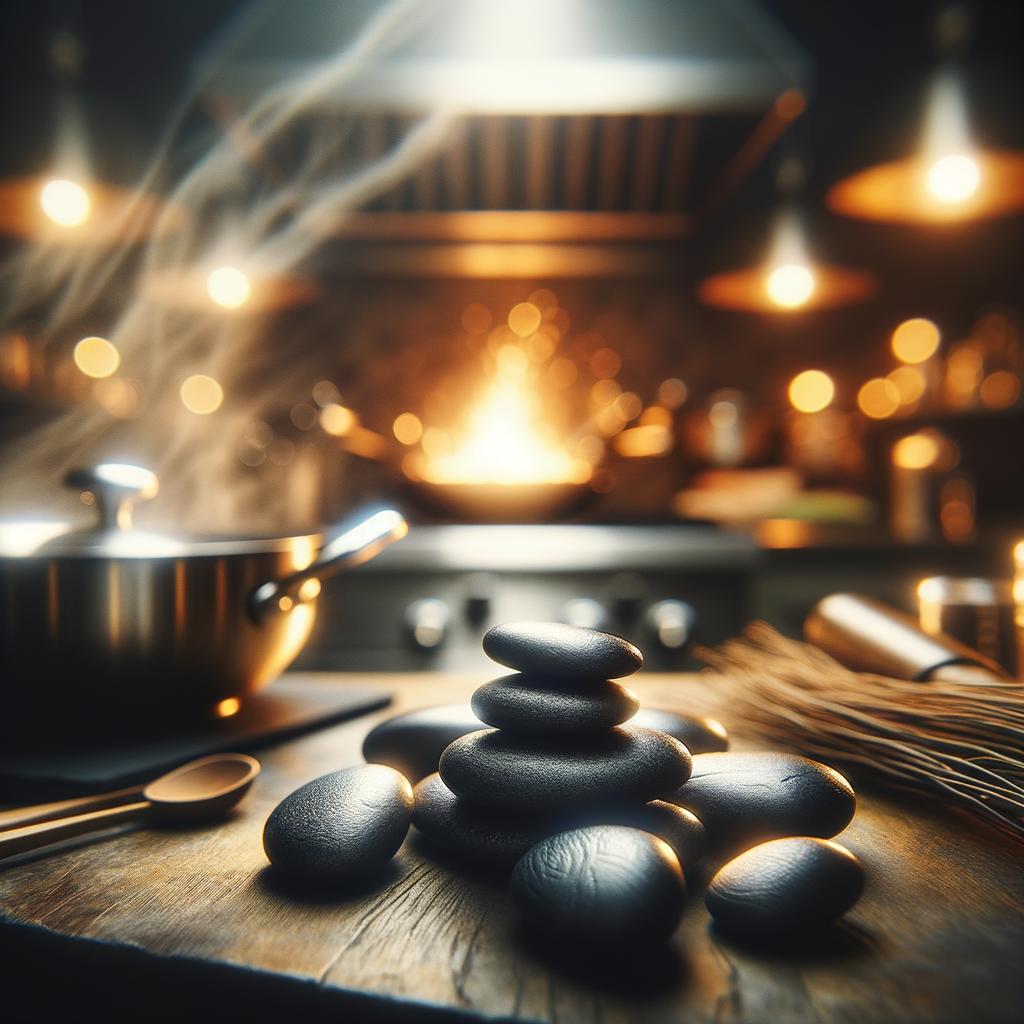Hot Stones

Hot Stones
Description
Hot stones, though not a conventional food ingredient, play a significant role in the culinary world. These are not your regular backyard pebbles but specifically selected stones that can withstand high temperatures and prolonged heat. They are typically smooth and dense, often sourced from river beds or volcanic areas. The stones are usually dark in color, varying from deep grey to black, and can range in size depending on their intended use. Their unique characteristic is their ability to retain heat for extended periods, making them an ideal natural cooking tool.
Primary Uses
Hot stones have been used as a cooking medium for thousands of years across various cultures. In traditional Hawaiian cuisine, hot stones are placed in an underground oven, or imu, to slow-cook a whole pig for a luau. In Korean cuisine, a sizzling hot stone bowl, or dolsot, is used to create the iconic bibimbap, crisping the rice at the bottom and keeping the dish hot throughout the meal.
Beyond culinary applications, hot stones also have therapeutic uses. They are heated and placed on the body during hot stone massages, a popular spa treatment believed to help relieve stress and tension.
History
The use of hot stones in cooking can be traced back to indigenous cultures around the world, from the Native Americans to the Maori people of New Zealand. These stones were not just tools but were also imbued with cultural and spiritual significance. For instance, in the Maori tradition, the stones used in the hangi, or earth oven, are considered sacred and are handled with great respect.
Over time, the use of hot stones has evolved and found its place in modern culinary practices. Today, they are used in high-end restaurants for dishes like hot stone steak, where diners can sear their meat to their preferred doneness right at the table.
Nutritional Information
While hot stones do not contribute directly to the nutritional value of a dish, they can influence the cooking process in a way that affects the nutrition of the food. Cooking on a hot stone can help retain the nutrients in food better than other cooking methods, such as boiling, which can leach away water-soluble vitamins. Moreover, since hot stone cooking requires minimal oil, it can result in dishes that are lower in fat and calories compared to other cooking methods.
In comparison to other cooking methods, hot stone cooking offers a unique, natural, and arguably healthier way to prepare food, making it a beloved culinary tradition that has stood the test of time.

